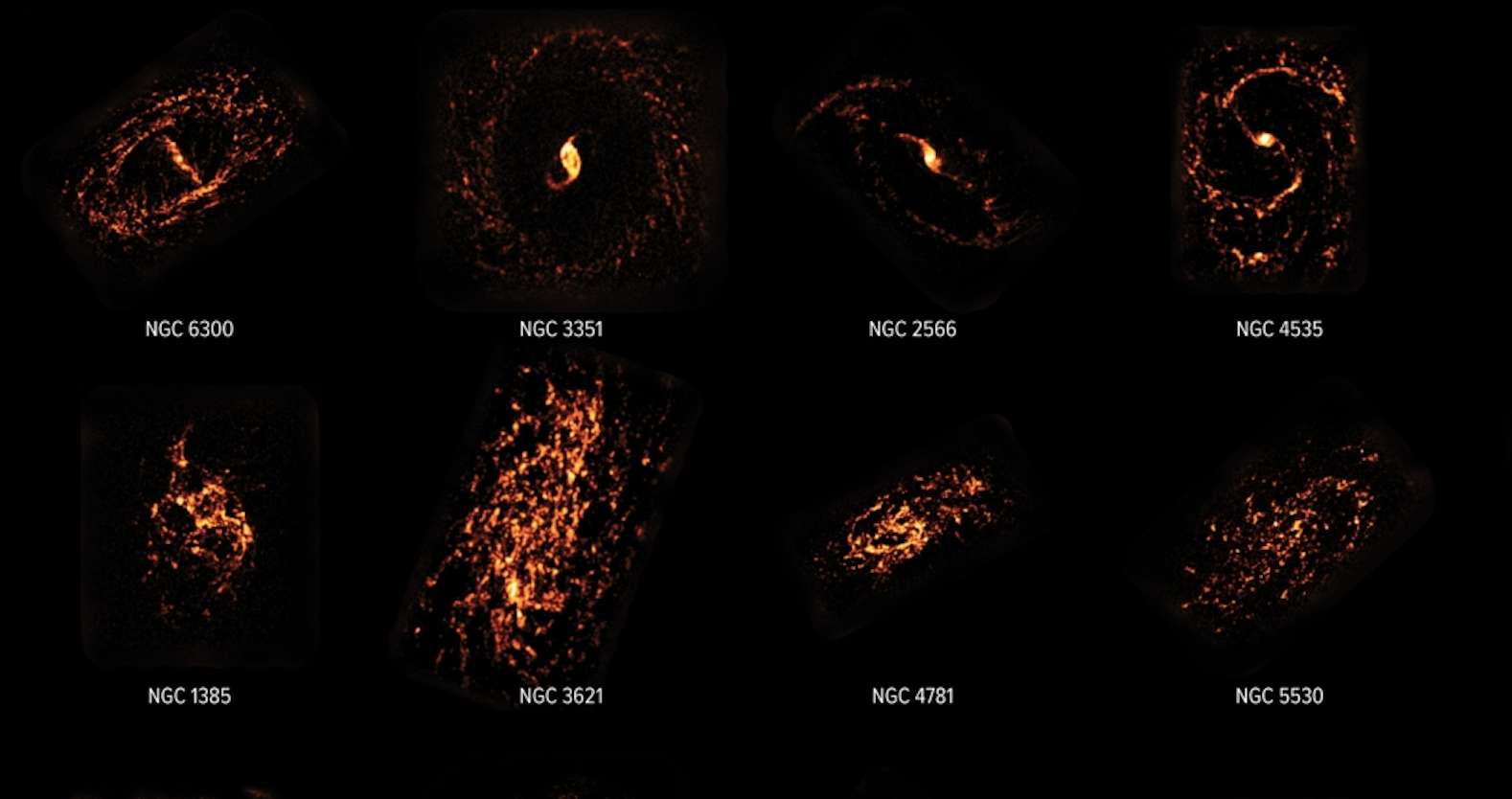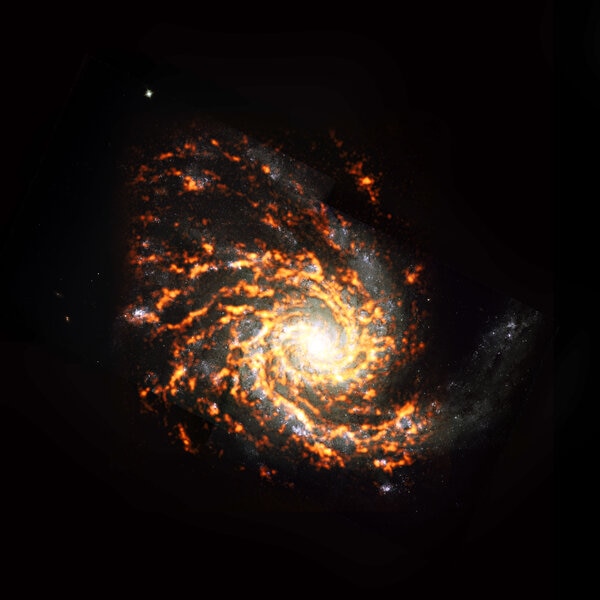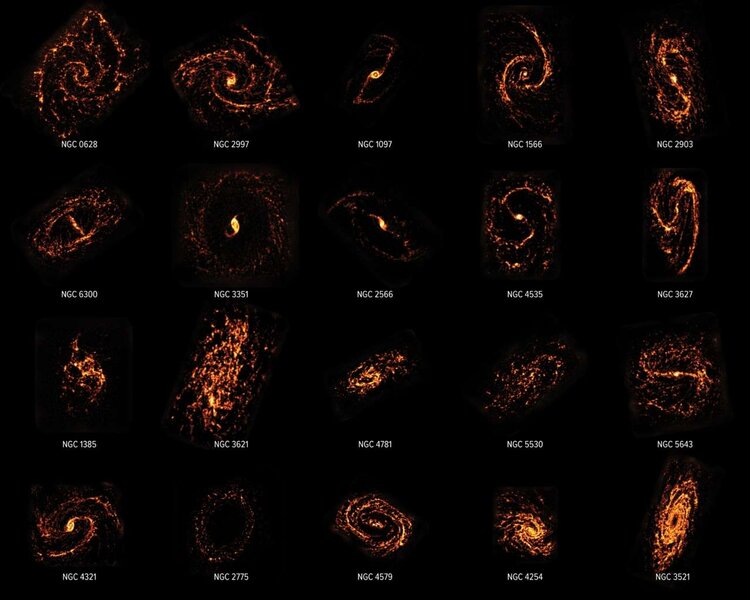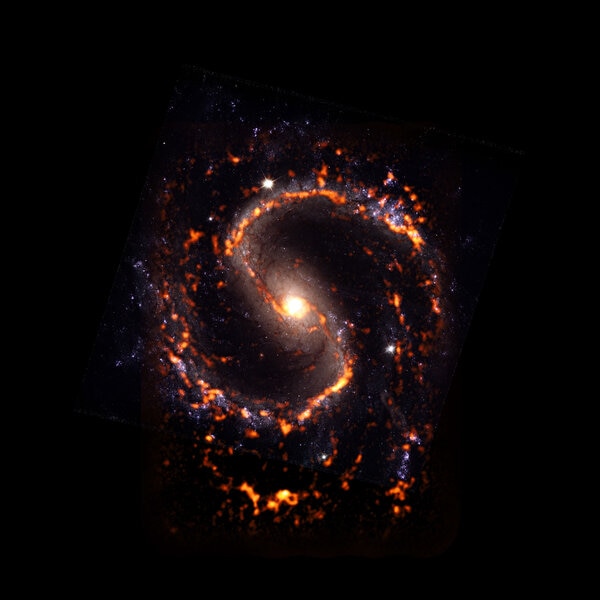Create a free profile to get unlimited access to exclusive videos, sweepstakes, and more!
Astronomers map over 100,000 stellar nurseries in first-ever cosmic forge census

Star forges are cosmic birthing grounds where concentrated gas and dust slowly coalesce into brilliant infernos to light and warm our universe. Per a new, first-ever study charting where these stellar nurseries exist, it appears that there is a wide range of sizes and shapes that nurture and create stars.
Between 2013 and 2019, astronomers with the Physics at High Angular Resolution in Nearby Galaxies (PHANGS) project carefully charted out over 100,000 stellar nurseries located across 90 galaxies, and discovered a number of previously unsuspected differences in these churning star factories. Last week during the virtual summer meeting of the American Astronomical Society, researchers delivered their illuminating census findings, which were also published back in April at Cornell University's online scientific server, arXiv.
"We used to think that all stellar nurseries across every galaxy must look more or less the same, but this survey has revealed that this is not the case, and stellar nurseries change from place to place," lead author Adam Leroy, associate professor of astronomy at The Ohio State University, said in a statement. "These nurseries are responsible for building galaxies and making planets, and they're just an essential part in the story of how we got here."
This five-year survey was tackled using a small segment of the cosmos called the nearby universe, due to its convenient location near our Milky Way galaxy. Astronomers engaged in the study employed the Atacama Large Millimeter/Submillimeter Array (ALMA) radio telescope sitting in Chile's Atacama Desert for this new mapping endeavor.
Their stellar incubator census was conducted using just the radio section of the electromagnetic spectrum, instead of the optical part. This allowed scientists to target the faint luminous glow emitted by dust and gas inside dense molecular clouds, rather than visible light shining from baby stars spawned by them.
"To understand how stars form, we need to link the birth of a single star back to its place in the universe. It's like linking a person to their home, neighborhood, city, and region. If a galaxy represents a city, then the neighborhood is the spiral arm, the house the star-forming unit, and nearby galaxies are neighboring cities in the region," PHANGS principal investigator Eva Schinnerer, an astronomer at the Max Planck Institute for Astronomy, added in the statement. "These observations have taught us that the 'neighborhood' has small but pronounced effects on where and how many stars are born."
Upon dissecting the acquired data and images, the team concluded that not all stars are created equal, and are determined by circumstances like whether or not their molecular cloud mothers exist within galactic discs, stellar bars, spiral arms, or galactic centers.
"Clouds in the dense central regions of galaxies tend to be more massive, denser, and more turbulent than clouds that reside in the quiet outskirts of a galaxy," said co-author Annie Hughes, an astronomer at L'Institut de Recherche en Astrophysique et Planétologie. "The life cycle of clouds also depends on their environment. How fast a cloud forms stars and the process that ultimately destroys the cloud both seem to depend on where the cloud lives."
These variations that play such a vital role in stellar creation will form the next stage of the pioneering ALMA mapping project and might perhaps answer more questions regarding star and planet formation.
"This is the first time we have gotten a clear view of the population of stellar nurseries across the whole nearby universe. In that sense, it's a big step towards understanding where we come from," Leroy noted in the official statement. "While we now know that stellar nurseries vary from place to place, we still do not know why or how these variations affect the stars and planets formed. These are questions that we hope to answer in the near future."





























